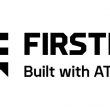xG Technology gets FCC certification, prepares for first profits
Florida-based startup xG Technology recently received FCC certification for its xMAX equipment, allowing the company to ship base stations for at least four new markets this month and experience its first profitable period, according to CEO Rick Mooers.
During an interview with MRT, Mooers said xG expects to ship “dozens” of base stations this month to service-provider partners in four or five markets other than Daytona, Fla., where Internet service provider Far Reach Communications has launched the first phase of a network for its xMAX mobile VoIP offering.
These base-station shipments were enabled by the FCC certifying the xG gear as compliant with the regulatory agency’s Part 15 regulations that govern operations in unlicensed spectrum, such as the 900 MHz ISM band in which xMAX customers will operate. Although the xG equipment passed the FCC lab tests 18 months before, certification was not granted until xG representatives visited the agency to answer questions last month, Mooers said.
“We had passed the test, and it’s normally a two-week process that’s supposed to be a formality,” Mooers said. “It appears that the FCC wasn’t lobbied just by people who wanted it but—as always happens, when there is something controversial—by people who are afraid of us and didn’t want this to see the light of day.”
The xMAX system boasts superior range when compared to cellular technologies like GSM, even though it meets the FCC’s low-power requirements for unlicensed operations, Mooers said. The fact that xMAX can operate at lower power levels eventually will lead to longer battery life for subscriber equipment, which is a significant issue for data-intensive mobile devices used in the enterprise and public-safety sectors, he said.
Combined with the fact that xMAX service providers do not have to own spectrum, the $50,000 base stations are a fraction of the cost to deploy typical cellular base stations, making xMAX an economically ideal technology for new entrants into the wireless market, Mooers said.
“We have the low-cost ability to make anybody a carrier,” he said.
Despite the low cost of the base stations, xG will realize pretax profitability of at least 60% with each unit sold, Mooers said. In addition, all of xG’s agreements to date call for the equipment vendor to receive 50% of the gross profits as each service provider adds subscribers to the network, he said.
“We’re going to show this month just how profitable—super-profitable—[xMAX] is—and that’s just at the front end,” Mooers said. “At the back end, where you get annuity streams coming off that carrier side, it’s going to look better.”
While xG Technology plans to concentrate on selling base stations during the first half of the year, it will unveil a new handset model—the TX60—in July, Mooers said. Not only will the new handset cost about half as much as the current handset model to manufacture, it is “as sexy as anybody’s phone,” Mooers said.
In other news, two potential international partners—National Grid Wireless in the United Kingdom and the Gama Group in Turkey—both announced in December that they have completed their due diligence on xG’s technology and have extended their existing territorial agreements. Under the extensions, xG Technology hopes to secure an exclusive deployment deal with National Grid Wireless by the end of March and a similar deal with Gama by the end of June.
Mooers reiterated xG Technology’s plans to have a 4G-compliant technology by the end of this year.

















